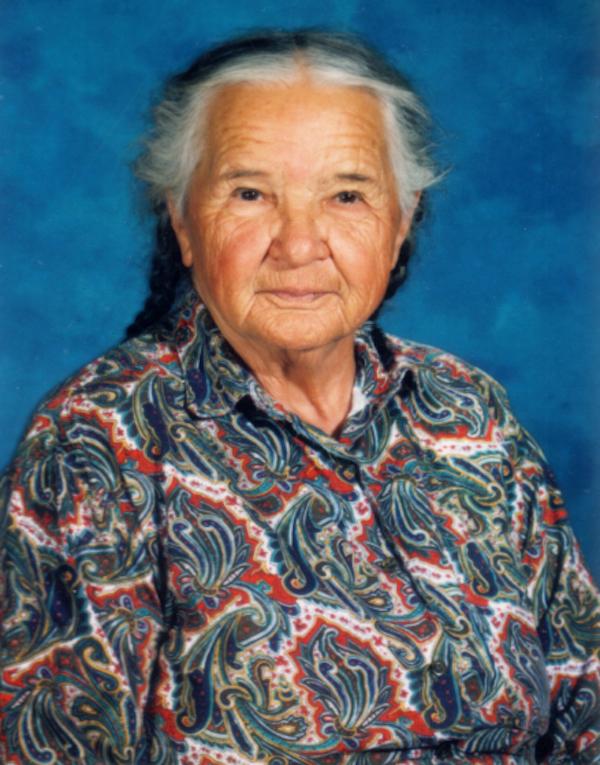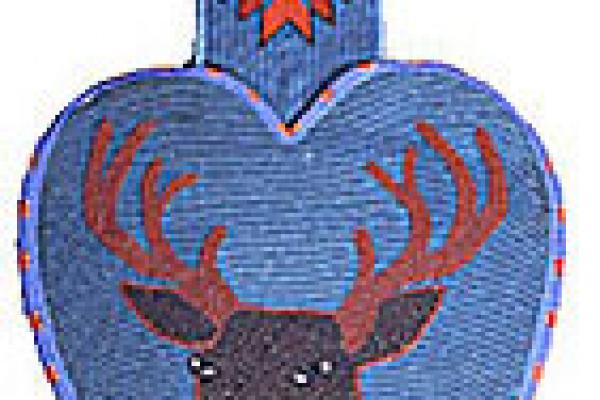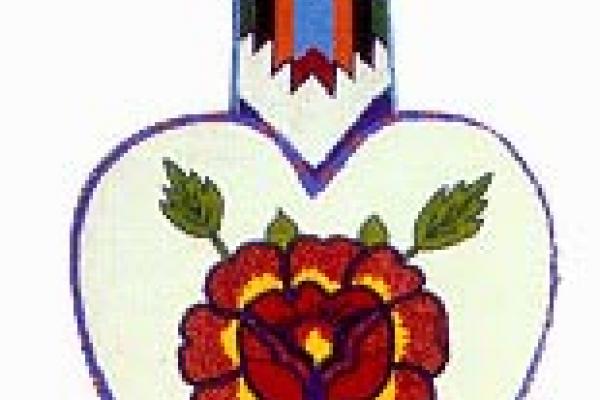Agnes "Oshanee" Kenmille

Photo courtesy of the artist
Bio
Agnes "Oshanee" Kenmille remembers doing her first beadwork 76 years ago when she was 11 years old. She beaded a four-leaf clover on a small purse that she intended to take to a Fourth of July celebration. Agnes's mother was so pleased with her daughter's work that she gave Agnes some extra beads to fill in the background, and that initiated her lifetime of artistic creation.
Although Kenmille has spent most of her life on the Flathead Reservation in northwestern Montana, she is now known worldwide for her skills in beadwork, hide tanning, and leatherwork. Born to Salish parents, and married into Kootenai families, Kenmille speaks the three languages of the Flathead Reservation - Salish, Kootenai, and English. She has taught hide tanning and beadwork for more than a decade at Salish Kotenai College, and she offers instruction in the Salish language at the tribal high school, Two Eagle River School.
Today, Kenmille travels from her log home along Flathead Lake, close to the spot where she put up her tipi 60 years ago, to attend pow wows and ceremonials. She says she loves to see the dancers using her beaded mocassins, gloves, vests, breachcloths, and dresses. Agnes sometimes takes a turn as the head woman dancer of the reservation but leaves the fancy dancing to the young people. She says, "When you are really into fancy dancing, you are out there and you really want to go to it. But when you are as old as I am, you can't. I can't jump high. The dancing really makes me feel like I can jump, but I can't." Even so, her magnificent work is carried to new heights by those privileged to dance wearing her regalia.
Interview with Mary Eckstein
NEA: Congratulations on your award. Could you talk a little bit about how what you felt when you heard that you had won the award.
MS. KENMILLE: I couldn't believe it. You know, it would take me ten years to make that much money, so I'm very happy.
NEA: How long have you been doing this kind of work?
MS. KENMILLE: Well, I was 11 years old when I started beading and now I'm 87.
NEA: That's a long time.
MS. KENMILLE: I'm too old now and I'm still doing it!


NEA: Tell me how you learned
MS. KENMILLE: By watching my mom. She was beading something -- I don't remember what -- and I started cutting little pieces of canvas. I started beading one with a four leaf clover and when I finished that I asked if she would give me some beads to put in a background. She asked to see what I'd done and when she looked at she said, "Really nice work." So that's when I started beading.
Then at 14 I started tanning hides, making leather. NEA: Tell me a little bit about the process of doing the tanning.
MS. KENMILLE: The hardest part is scraping the hair off. After that you put it in water, then wring it out and straighten it. You continue that process until it gets to be a really light color, really white. Then it's time for you to put in brains. We call it brain tan.
NEA: What purpose does that serve?
MS. KENMILLE: To soften the hide.
NEA: So if you skip that process, that step of the process, it probably wouldn't be as desirable?
MS. KENMILLE: That's right. I do two different kinds of hide. There's a smoked one and there's the white one. The white one is the natural color but you can't wash it. The smoked one you can wash anytime it gets dirty. But the white one you've got to do your best to keep it clean.
NEA: And what tools do you need for tanning?
MS. KENMILLE: You know the sickles they used to cut grass? W use that kind of blade to scrape the hair off. It's pretty heavy but that does the work.
NEA: What kinds of hides do you use?
MS. KENMILLE: Deer hides. I tan one, then I make something out of it. I make gloves, bags, moccasins, some dresses and vests. You name it, I make it. I'm well-known all over the United States.
Every hide is different. The thin ones I use for vests, or gloves or small little moccasins. Thick ones I use for large moccasins, for big men.
NEA: Are there specific colors that you like to use or color contrast?
MS. KENMILLE: For the outline I use dark, dark colors. Then I use green to start and then I go on to the light green and dark green and then I use yellow and then I start using red, dark red and light red, then I go to blue, light blue or turquoise and dark blue, and that's the outline is dark blue.
NEA: Are there particular meanings behind the colors that you use or do you just like the way they look together?
MS. KENMILLE: I know how the colors will come out, you know, like turquoise and black, they really come out good, pretty. Black and white is another combination that comes out pretty.
NEA: The patterns that you use for the beadwork, did you learn those from your mother or have you created your own patterns and your own designs?
MS. KENMILLE: For the lazy stitches I don't have any pattern. I just start right from the middle and then I go on, go out, right and then I finish the right side and then I go to the left side.
NEA: And where do you usually get your materials for doing the beadwork? Do you buy them at a local store?
MS. KENMILLE: There are lots of places where I get beads around here. There's a store right around the corner where they sell beads.
NEA: Has that changed at all over time, your supply, your supplies, or has that pretty much stayed constant?
MS. KENMILLE: Yeah, they change the price all the time.
NEA: I gather it keeps going up.
MS. KENMILLE: It varies. About 30 miles from here the beads are pretty high, $2.25. Right here around the corner here where I live, about half a mile, it's $1.60. See the difference?
NEA: That is a big difference. You mentioned people throughout the country know of your work. Have you had any unusual orders?
Kenmille: I made a pair of gloves for Al Gore.
NEA: Really?
MS. KENMILLE: Yes. And I made a pair of gloves for Mohammed Ali. The biggest pair I could make.
Al Gore was in this area a few years ago when he was working for Clinton. He was here in Missoula and they gave him a pair of my gloves.
NEA: Do you think he liked them?
MS. KENMILLE: Oh, yes. He wore them.
NEA: That's wonderful. And what about Ali?
MS. KENMILLE: Well, he was so tickled, that about three or four years ago -- it was in the paper, our paper here in Montana -- he said, "I'm sending money to the college in Montana because I got a pair of gloves from an elder lady so I'm sending some money to the college." So I'm really proud about that, too.

